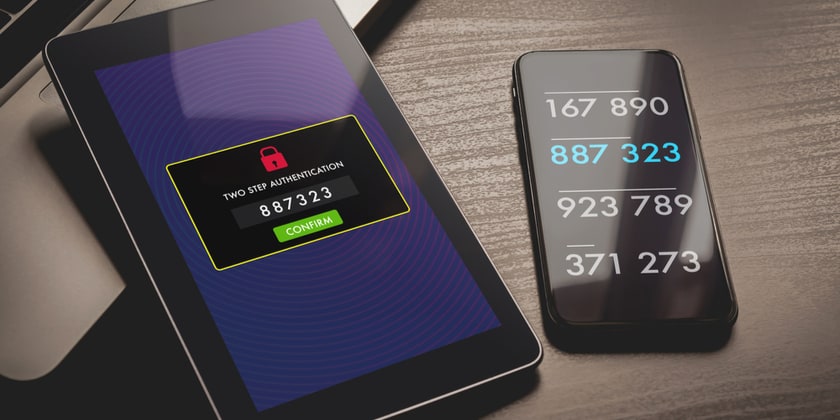Multi-factor authentication, also known as MFA, adds an additional layer of security to your online accounts. Rather than just confirming your identity with a simple username and password, you will have to provide two or more authenticating factors which only you can access. Really, it’s just another way to double-check that you are who you claim to be, thereby reducing the chance of someone fraudulently accessing your account.
How does Multi-Factor Authentication work?

After logging into an account with a password, you will be prompted to confirm your identity by inputting a second or third form of identity verification.
There are five types of authentication that can be used:
- Something you know: A password, PIN, postcode, or answer to a question (ex: mother’s maiden name).
- Something you have: A token, phone, credit card, SIM, or physical security key.
- Something you are: Biometric data such as a fingerprint, voice or facial recognition.
- Location-based: Authentication systems use GPS coordinates to confirm the login location.
- Time-based: Current time is used to generate a one-off code that will expire after a few seconds.
Some of these verification methods are undoubtedly more secure than others but essentially it means that even if someone steals or guesses your password, they won’t be able to access your account without another authenticating factor.
How to Enable Multi-Factor Authentication
Typical multi-factor authentication technologies include:
- Swiping a card and entering a PIN.
- Logging into a website and being requested to enter an additional one-time password that the website’s authentication server sends to your phone or email address.
- Swiping a card, scanning a fingerprint and answering a security question.
- Attaching a USB hardware token to a desktop that generates a one-time passcode, then using this one-time passcode to log in.
Benefits of Multi-Factor Authentication
Multi-factor authentication provides an extra layer of protection that can significantly reduce the chance of your accounts being hacked. As the number of security breaches continues to rise, it’s important to take the proper precautions to safeguard your data.
The benefits of using multi-factor authentication include:
- Enhanced security – Multi-factor authentication is a great way to reduce data theft and restrict unauthorised access to your account. Even if hackers know your password, they won’t be able to access your account without your smartphone or another form of verification.
- Easy to enable – The great thing about multi-factor authentication is how easily it can be set it up on all your accounts.
- Secure remote access – With an increasing number of employees working remotely, multi-factor authentication enables access to company data without compromising corporate networks.
- Compliance with regulatory standards – Many organisations are now subject to compliance regulations that require them to implement multi-factor authentication to keep certain types of information private and secure from interception. This could be for logging in, resetting a password or to provide a stronger authentication process for the protection of sensitive data like personally identifiable or financial information.
- Reduces Fraud– Multi-factor authentication reduces the likelihood of identity theft as criminals are unable to compromise logins with usernames and passwords alone.



